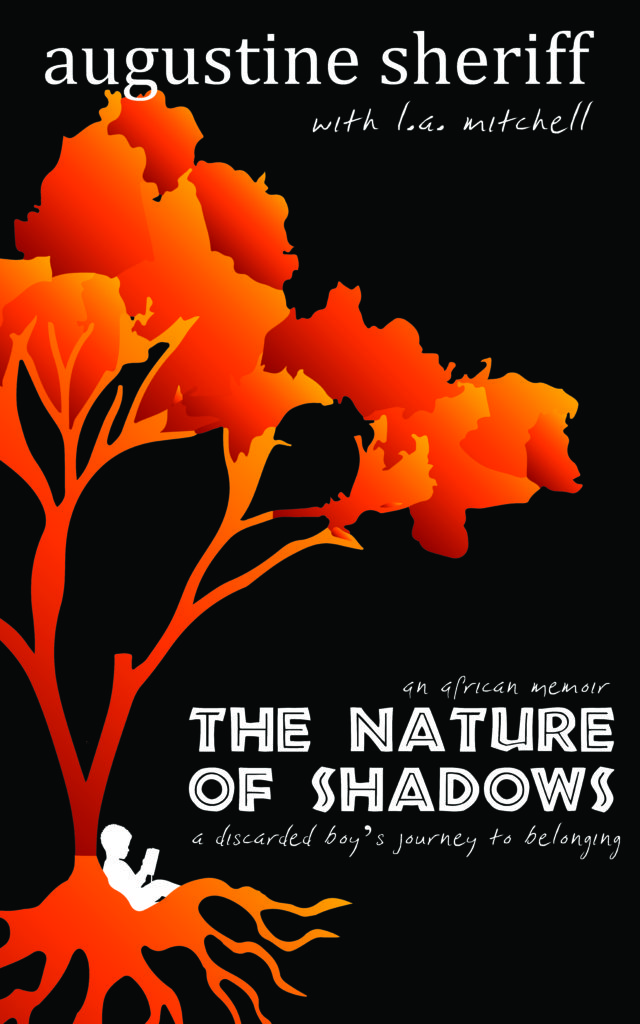
Arguably more than any other genre, memoir leans on the concept of theme to be potent and focused and effective. Whereas autobiographies are careful to detail the entire scope of a person’s life, memoir is a snapshot. That snapshot can last a day or a decade, so long as there is a unifying point.

One of the first big decisions Augustine and I encountered was how to effectively tell his story. Chronological seemed most obvious. THE NATURE OF SHADOWS covers his life from his earliest, unreliable memories until the United States granted him a diversity visa as a young man in his 20s. We were looking at a span of twenty years, which fit genre expectations as a maximum amount of time memoirs should cover. Obviously, not everything that happened in Augustine’s life in those two decades was memoir-worthy. To narrow the scope, we had to dig deeper.

Mary Karr, in her book THE ART OF MEMOIR, writes about the overabundance in the memoir genre of “butt-whooping” stories. The phrase perfectly describes what I found to be true in my early research of the genre: a glut of drug and alcohol dependency and abuse journeys. Augustine’s life could certainly fit into the latter category. But from the beginning, Augustine wasn’t about that. He always wanted his message to be pure and clear and hopeful. A memoir can’t be all unicorns and rainbows to be effective. Light always shines brightest next to darkness. So, the balance of the two, light and dark, became a tightrope in our writing journey.

Time and again, we circled back to the essence of what he wanted to say—that he would not be where he is today without the people he encountered in his life. He viewed his fortune like a house of cards. Take any one person out of his scaffolding and his entire journey would not have happened. We decided to dedicate one chapter to each influential person in his childhood, but how to organize further? At the time, I recalled a plot diagram in Damon Knight’s CREATING SHORT FICTION that looked like an arrow spiraling inward, approaching the story's core by degrees.
I remember the day I proposed this unconventional idea to Augustine. I brought index cards and a Sharpie to our meeting. As if by some miracle, a huge table emptied at Starbucks. We used every bit of that prime coffeehouse real estate. After he distilled his life to those who most comprised his house of cards, one name on each card—no easy task—I asked him to do something even more challenging: place them in order from least impactful to most impactful. As in fiction, I secretly hoped the encounters would build to an organic climax. I wasn’t disappointed. The people and the arrow came together so flawlessly, I knew we had our structure.
The fleshing out of the draft came with additional challenges. Beta readers came back with important feedback about how the non-linear structure still confused them. We added chapter headings, dates and subheadings, and a bit of an explanation of the book’s structure in the introduction. People from one chapter sometimes reappear in other chapters like layers of an onion peeled back for greater understanding. By aligning theme and structure, every movement in the book became focused and effective. And sometimes, the juxtaposition between light and dark, between child and young man, was so potent, it might have been magic.
Telling a memoir in non-linear form was a risk, but what is writing without risk?
Day Four: Specificity
Reader? Join my newsletter for exclusive content, giveaways, ARCs, shared playlists, and other fun.
Writer? Join my newsletter for coaching/editing/writing tips, priority booking, and insider discounts on services.
[…] Day three: The Scaffolding of a Life […]